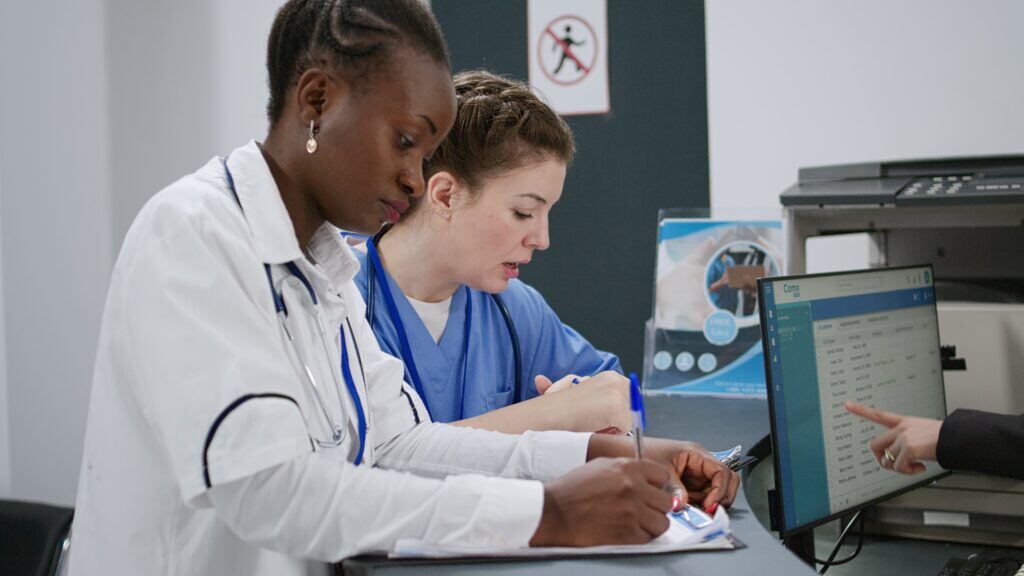Small medical offices can benefit significantly from implementing a new EHR system. One critical part of this transformation is comprehensive staff training to guarantee that the system operates efficiently and securely. This guide offers five recommended practices for educating employees on a new EHR system, with an emphasis on platforms suitable for small practices, such as Amazing Charts.

1. Create a customized training plan:
- Recognize that staff members may have different levels of technical proficiency. Assess each team member's abilities and knowledge so that training can be tailored accordingly.
- Define what each staff member should learn. Goals should be specific, quantifiable, attainable, meaningful, and time-bound.
- Use a variety of training modalities, including hands-on sessions, online tutorials, and group discussions. This variation accommodates different learning styles and keeps the instruction interesting.
2. Use the EHR's Training Resources:
Many EHR systems, such as Amazing Charts, provide built-in training modules and tutorials. These resources are intended to help users understand the system's features and functionalities.
- Encourage workers to complete online tutorials that cover important functions such as patient registration, appointment scheduling, and record maintenance.
- Schedule frequent sessions for personnel to practice these skills in a controlled environment.
3. Provide Function-Specific Training:
Each staff member uses the EHR differently depending on their function.
- Customized Training for Different Roles: Nurses and medical assistants may require extensive understanding of patient charting, while administrative staff may focus on appointment scheduling and invoicing.
- Incorporate role-specific situations to enhance training relevance and practicality.
4. Implement Hands-On Training:
Providing hands-on training is essential for workers to become familiar with the new EHR system.
- Realistic practice environment: Create a simulated or test environment in which employees can practice entering data without damaging actual patient records.
- On-the-Job Training: After gaining a basic understanding, let employees to use the EHR in real-life scenarios under supervision. This helps to understand the system's practical use.
5. Continuous Support and Feedback:
After initial training, ongoing support is essential for overcoming obstacles and reinforcing learning.
- Create a Support System: Assign competent team members or external experts to give ongoing help.
- Hold regular feedback sessions to address difficulties, exchange tips, and get input on EHR utilization.
- Foster a culture of open-ended inquiry and collaborative learning among personnel.
Implementing a new EHR system, such as Amazing Charts, in a small practice necessitates a carefully planned and implemented training strategy. Small practices can ensure a smooth and effective transfer to the new system by personalizing the training plan, utilizing built-in resources, focusing on role-specific training, adding hands-on experiences, and offering ongoing support and feedback.
These practices not only improve staff skills and confidence, but also contribute to the overall efficiency and quality of care provided to patients.
6. Train staff on data security and patient privacy
- Regular Compliance Training: Provide updates and training on HIPAA and other privacy rules.
- Educate staff on secure login methods, password management, and identifying potential security concerns.
7. Encourage feedback and adapt training
Staff feedback is crucial in improving the EHR training process.
- Encourage staff input on the EHR system and training approaches through established channels.
- Improve the training program based on feedback to ensure its effectiveness and relevance.
8. Plan for Ongoing Education and Updates:
EHR systems are constantly evolving, so it's crucial to keep staff informed.
- Schedule regular training sessions for staff on new EHR system features and updates.
- Foster a culture of continual learning by encouraging personnel to stay up-to-date on EHR technologies and best practices.
9. Use Real Patient Scenarios for Training:
Incorporate real patient scenarios into training to help staff understand how to use the EHR system effectively.
- Scenario-Based Learning: Staff can traverse realistic scenarios created using anonymized patient data.
- Promote critical thinking and problem-solving skills among personnel.
10. Recognize and celebrate successes in EHR adoption to promote morale and engagement.
- Recognize Achievements: Celebrate when employees complete training modules or exhibit proficiency with the system.
- Favorable reinforcement: Use these achievements to excite the team and build a favorable attitude toward the new system.
Implementing an EHR system such as Amazing Charts in a small practice necessitates a diverse approach to training. Understanding the specific needs of your practice and personnel, as well as implementing these best practices, will help you ensure a seamless transition and maximize the benefits of your EHR system.
Remember that the goal is not merely to learn a new system, but also to improve your practice's overall efficiency, security, and patient care quality.